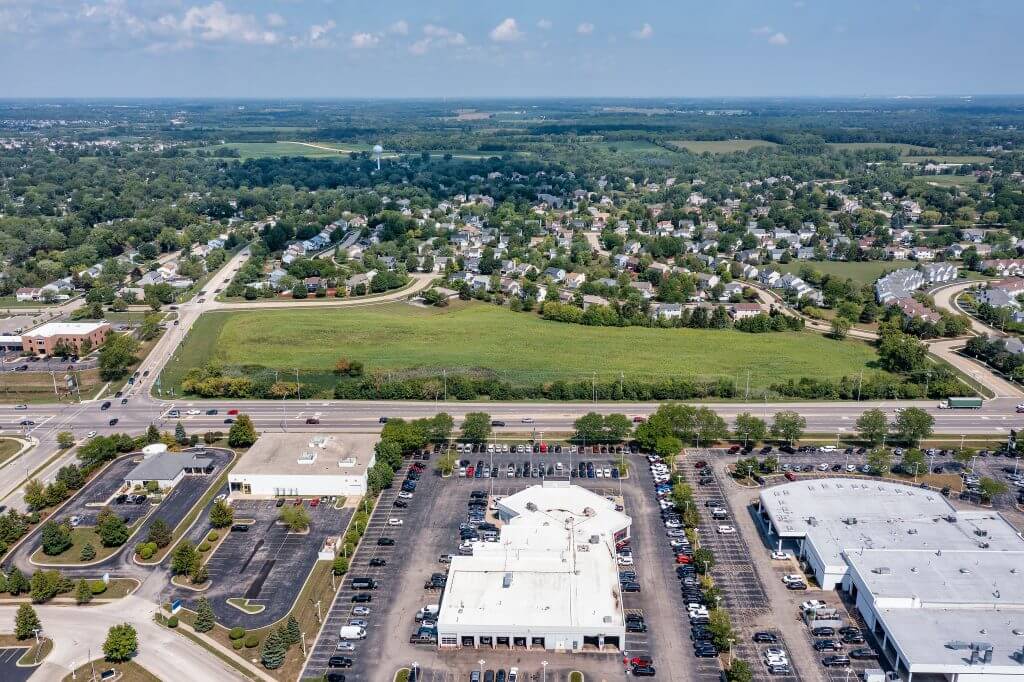December 5, 2023
Table of Contents
- The Environment
- The Economy
- It’s About Tomorrow
- Conclusion
Urban planning is integral to the construction segment but is often ignored. Urban planning isn’t glamorous like a gleaming tower ascending into the sky, a functional structure that operates in ways users couldn’t imagine, or a magnificent design that seemingly comes from the far reaches of an architect’s mind. Urban planning isn’t any of those things, but rest assured, none of those things would be possible without it.
By definition, the discipline of urban planning focuses on the health, practicality, and quality of life of urban places. Cities, suburbs, towns, and even small villages all depend on it to some extent. From major highways that crisscross and go every which way to quiet residential streets lined by picket fences, none of these things happen; all are planned. The profession is one of the most critical pieces of the construction process and consists of several interesting layers, including the following.
The Environment
A key consideration of urban planning is the environment. With the health of our planet increasingly becoming a hot-button issue, now more than ever, urban planners must factor the environment into their thinking. But it’s important to note that it’s not a one-size-fits-all approach. What works on the East Coast, where rain and snow are more prevalent, can’t be used to make plans out West, where dry heat is more prevalent. With that, professionals must tailor their plans to fit the needs of the region they’re focusing on and forecast accordingly. Future uses should also be factored into the equation as the area they apply their plans to today won’t necessarily be the same in the future.
The Economy
Business and economics play important roles in urban planning. When dollars circulate through an economy at a healthy rate, it attracts corporations and residents. With this growth, the needs of the area can change dramatically. Forecasting incorrectly can lead to disaster. For example, a region becomes a magnet for technology companies, attracting thousands of employees and families. The company builds a beautiful office to house employees, but due to zoning restrictions, the closest area where homes and neighborhoods can be built is 50 miles to the East. This example can ripple effect on the environment and quality of life as employees are forced to commute at least 100 miles a day, adversely impacting spending in other areas and causing the economy to stagnate rather than expand.
It’s About Tomorrow
Last but certainly not least, urban planning is a long game, focused on what sits in front of the planner and, more importantly, what is to come. Does the infrastructure support the projected growth rates of the city or town? Which demographic is growing at the fastest rate? If it’s children, do the streets and roadways support building new schools, parks, and other child-centric structures? Are residents aging out and focusing on slower-paced lifestyles, supported by senior living facilities, or are they seasonal? Professionals must consider all of these during the urban planning process.
Conclusion
Cities, suburbs, towns, and villages don’t just happen. They’re all products of sound urban planning and part of the backstory of every destination. If you’re part of the process, remember to focus on the environment and how your efforts will impact the planet’s health and move forward with the best intentions. Keep an eye on the economy, growth trends, and how the plans will attract residents and drive commerce. Finally, focus on the future because what you see today will differ from what gets used tomorrow. Remember, cities, towns, and suburbs … don’t just happen; they’re all part of sound urban planning.
AIA Contract Documents software allows you to efficiently create, share, and manage the industry’s leading construction documents. Request an ACD5 Product Demo Here.
AIA Contract Documents has provided this article for general informational purposes only. The information provided is not legal opinion or legal advice and does not create an attorney-client relationship of any kind. This article is also not intended to provide guidance as to how project parties should interpret their specific contracts or resolve contract disputes, as those decisions will need to be made in consultation with legal counsel, insurance counsel, and other professionals, and based upon a multitude of factors.

